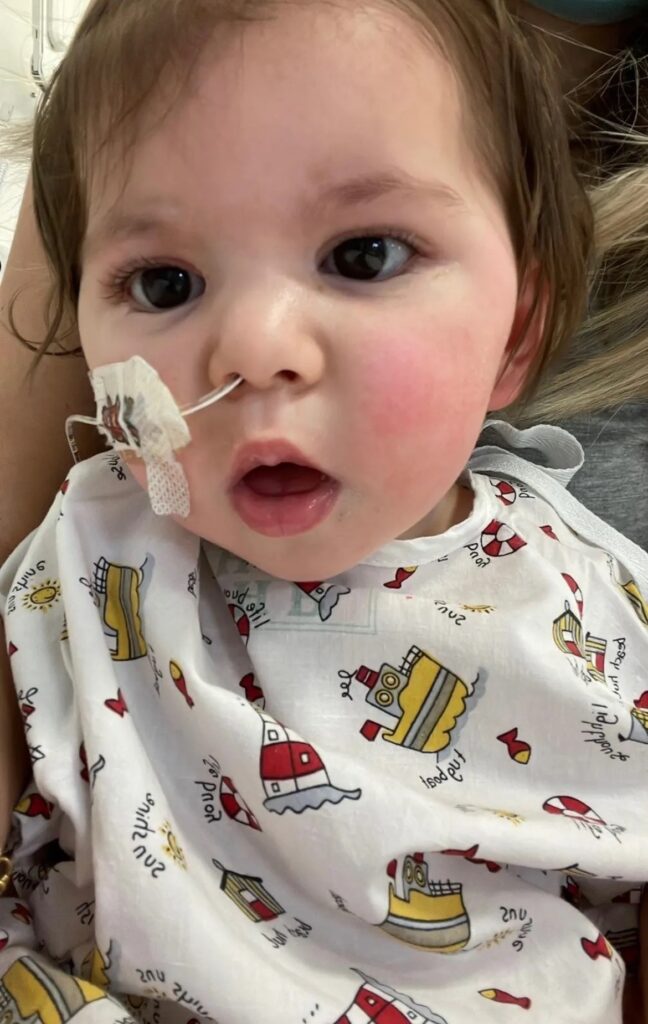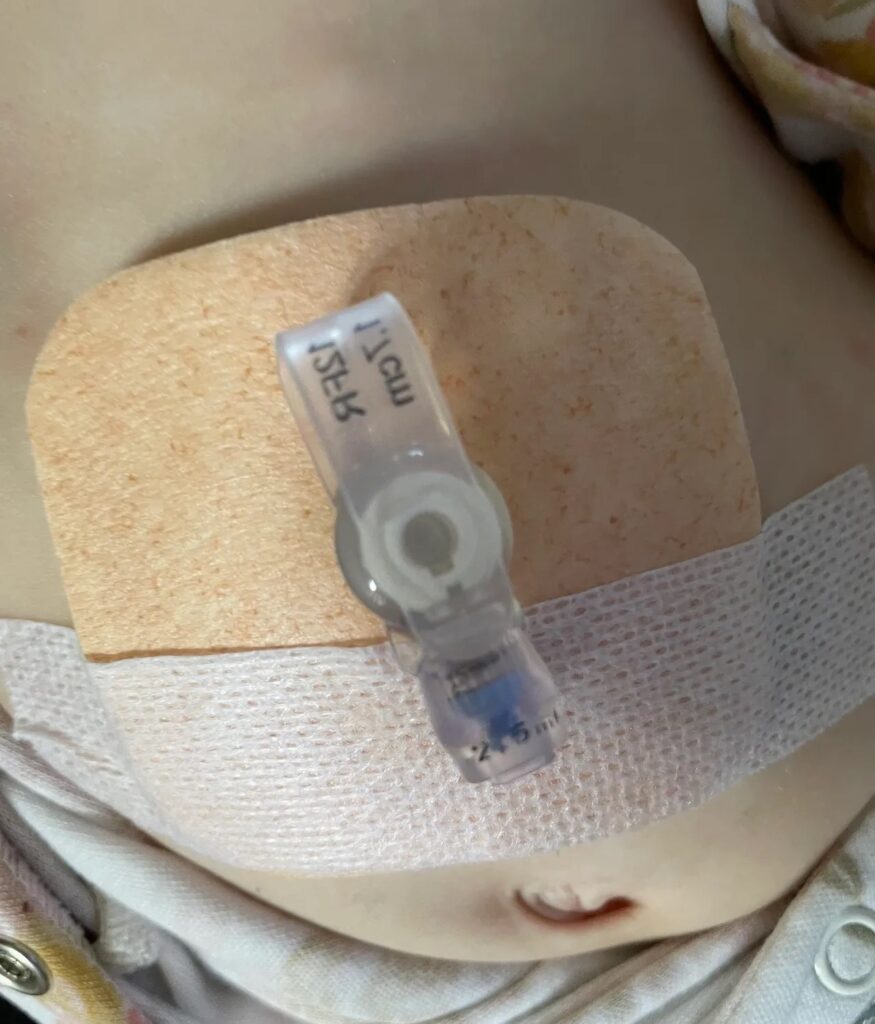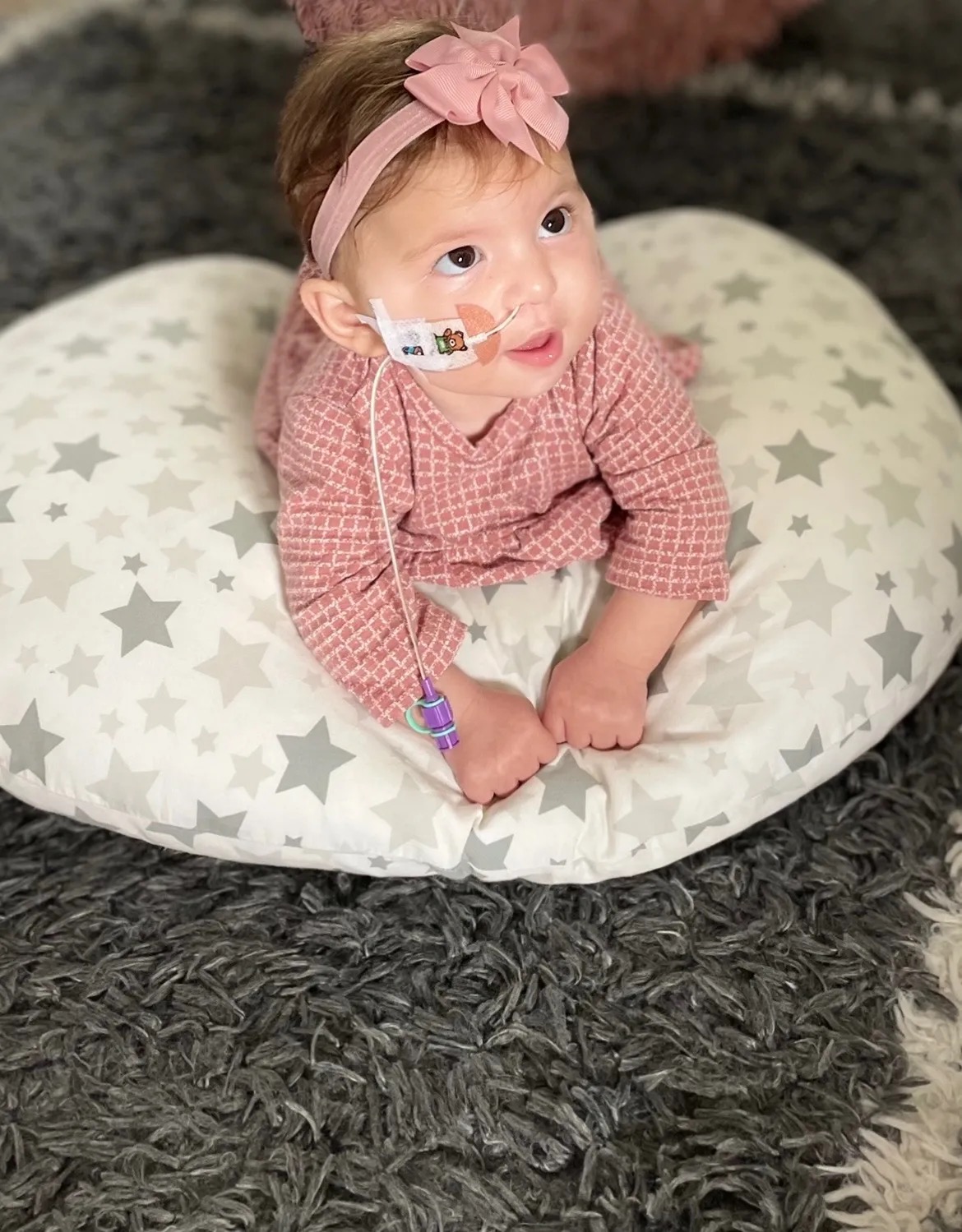There are SO many reasons why a child or baby might need a helping hand with getting nutrition into their body. Brain injuries, premature birth, gastrointestinal issues….
The list goes on!
I am NOT a medical professional so I can only speak from my personal experience. My daughter, Avery suffered a hypoxic event at 3 days old, as a result she has Cerebral Palsy among other conditions.
Her coordination took a massive hit, which includes the huge amount of skill it actually takes to eat, as much as we can take it for granted!
Which leads me to the topic of this blog.
If you’re more of a watcher and less of a reader, I have a YouTube video that covers all of the points in this blog and more.
What Do I Know?
If you’re reading this blog I imagine you’ve already got some idea of what an NG and a G Tube are.
Avery has been tube fed almost her entire life, apart from the small stretch of time before her event when we were blissfully oblivious to what we would soon have to face.
She had an NG tube from the PICU days up until April 2022 when she had her gastrostomy surgery for her new Mini Balloon Button to be placed.

What’s The Difference?
The name suggests (Naso-gastric), the NG tube is inserted through the nose and makes its way down to the stomach. The G Tube button is inserted directly through the surface of the abdomen into the stomach and is held in by a little water filled balloon.
There are other types of G Tube – But once again, I am not a medical professional, so I can only speak from experience, so I’ll be referring to the Mini Button.
Pros & Cons
They both have them.. and I could go on for hours about the challenges we’ve dealt with while adjusting to the tubes. But I’m sure you don’t want to see paragraph on paragraph of me droning on about all of our encounters – so I’ll try and keep it simple.
NG Tube
Temporary – The NG tube is usually what’s recommended when it’s only a temporary situation. It can be inserted and removed at home by whoever is trained to do it.
‘Simple’ Procedure – I say this subjectively because it’s not a pleasant experience to pass a new tube, but by simple, I mean it doesn’t take surgery.
The risk – On its merry little way to the stomach the NG Tube passes a couple of very important organs – the lungs. The tube could potentially move to the lungs – you can imagine worst case scenario, but aside from that, it can cause chest infections. A chest infection in an already vulnerable child can lead to much nastier things.
PH Testing – Yes this is the only thing we had to prevent the previous risk, but it’s a tedious task. Especially since Avery was taking Omeprazole which made those little strips very difficult to read.
Reflux – We were told countless times by a certain medical professional that the NG tube shouldn’t affect reflux, but after doing our own research, low and behold – it does!
Discomfort – I don’t think this point needs much explaining, there’s a tube in the throat.
Appearance – Superficial I know, but obviously, the tube is inserted through the nose, which means it needs to be taped to the face. I can’t speak for Avery’s opinion but if it was me, I would most definitely feel self-conscious.
G Tube

Low Profile – A G Tube can be easily hidden with clothing – The Mini Button in particular is very discreet is it’s just a small button on the surface of the skin. An extension set is then attached to the button for feeding.
Blended Diet – I’m only touching on this briefly as we’re not quite at this stage yet, but we will be! G Tubes are bigger in diameter since they don’t need to go down the nose. So there are more feed options, including real blended foods (Very much looking forward to this).
Surgery – Since this tube is inserted through the skin there is surgery involved. Definitely not a nice experience as a parent or for Avery – or so I assume since she was in too much pain to be held for 2 whole days.
Infection – This risk comes with any surgery. We’ve been battling infection ever since the surgery. I don’t want to scare you hear – Avery’s Tube is too big in length which is basically what caused the infection, and since we can’t change the tube until the 3 month recovery mark – antibiotics and dressings it is!
Fast Healing Time – This seems as though it should be a pro right? No, the stoma heals super fast, so if you have a curious child that manages to pull out their tube and you don’t notice in time – you’re basically back where you started.
What’s right for my child?
I can’t answer that for you, but I hope this post has helped you gain a bit of knowledge from a Mother’s perspective.
For our family and Avery, I still think we’ve made the right choice – infections and all!
It’s so nice to be able to see Avery’s hold face without tapes taking up the majority of her cheek, and she no longer screams when she gets put down on the floor in anticipation of the dreaded NG Tube change.
The option of a blended diet was one of the biggest advantages for me, the idea that she can still be consuming real foods made at home. I’ll be sure to leave an update on how that goes when her stoma is fully healed.
I hope you decide what’s best for your child and your family. But just remember when making your decision – fed is best, no matter the method!

